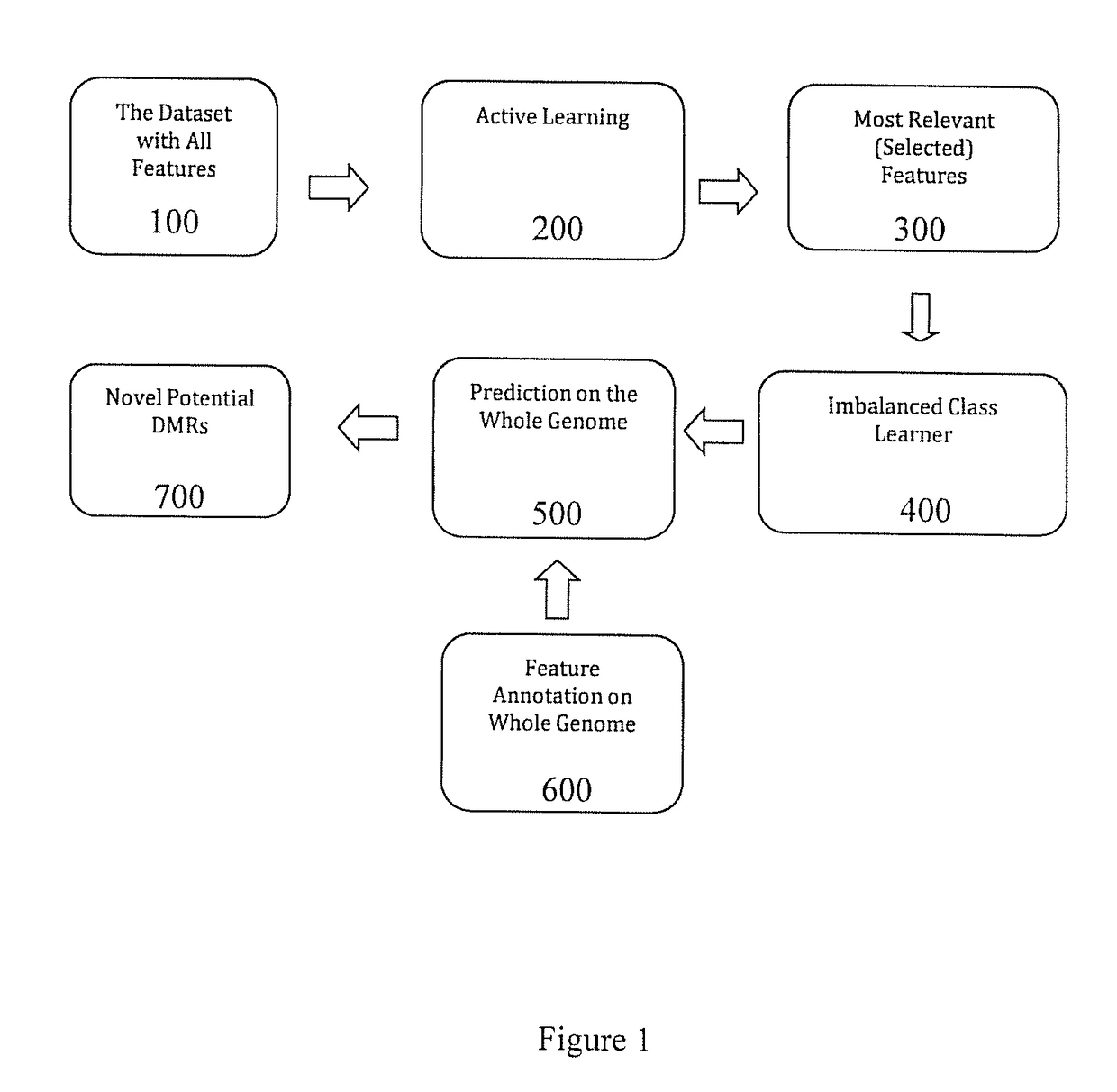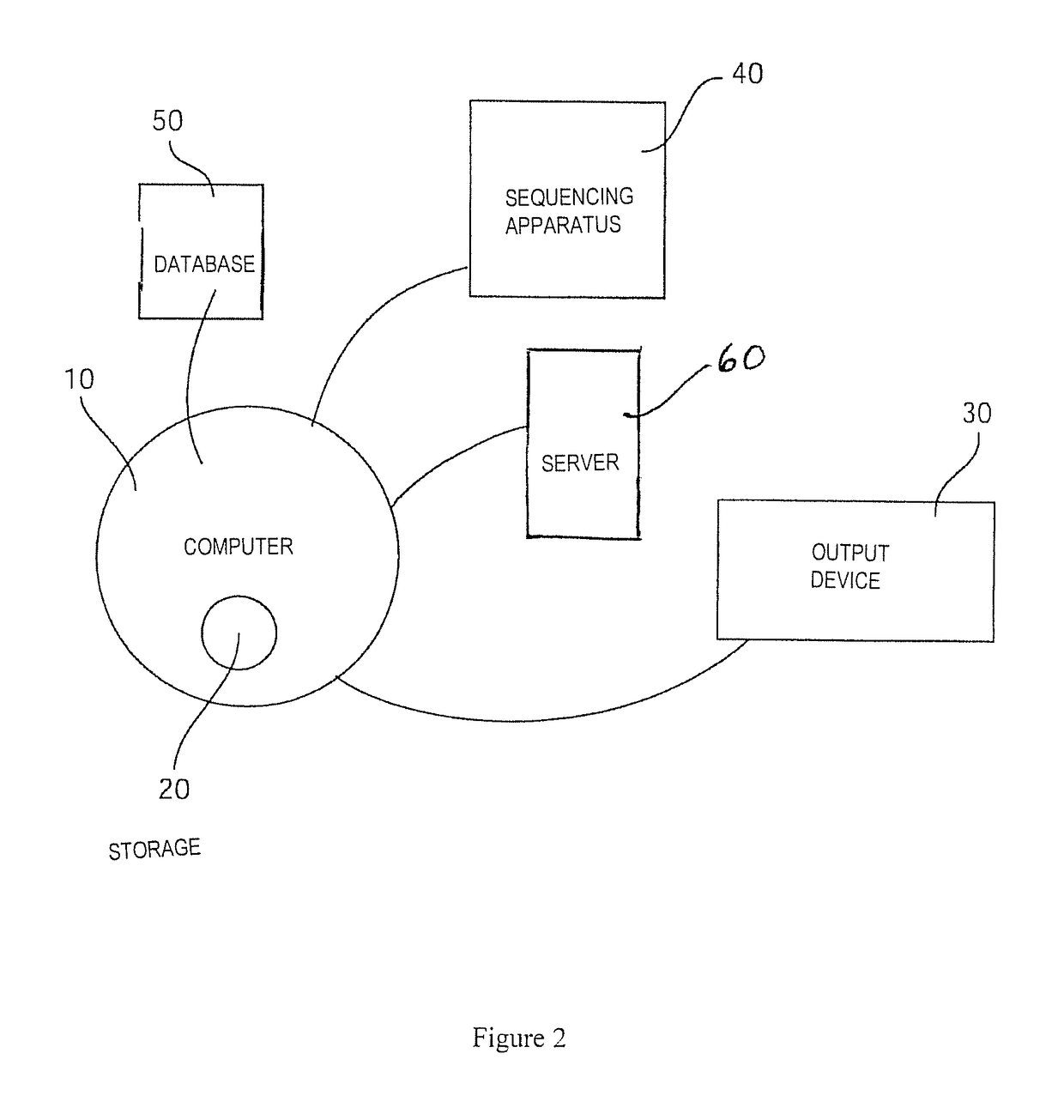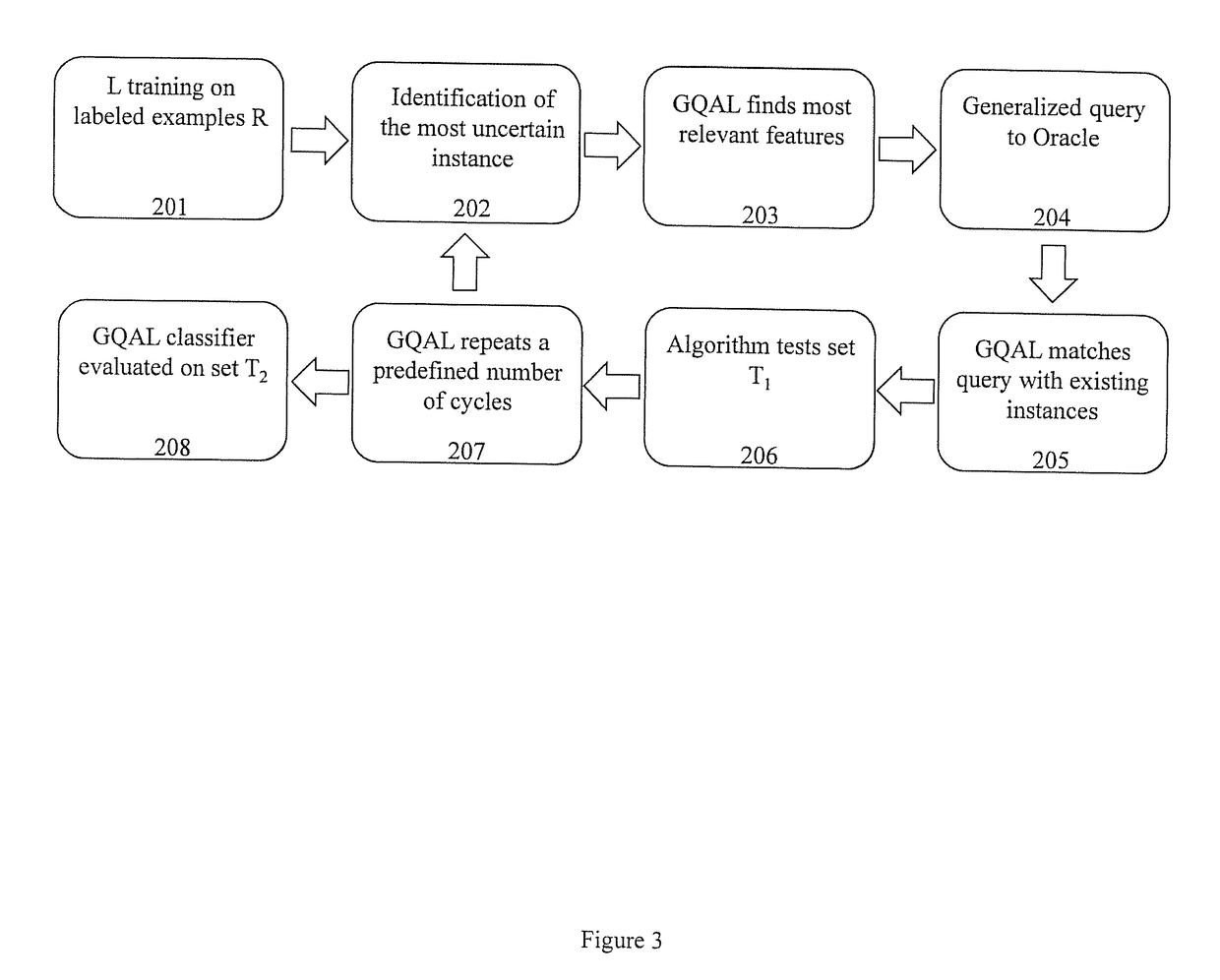Novel machine learning approach for the identification of genomic features associated with epigenetic control regions and transgenerational inheritance of epimutations
a technology of epigenetic control and machine learning, applied in the field of identification of epigenetic modification and/or epigenetic regulatory regions of dna, can solve problems such as inability to alter
- Summary
- Abstract
- Description
- Claims
- Application Information
AI Technical Summary
Benefits of technology
Problems solved by technology
Method used
Image
Examples
Embodiment Construction
[0027]Many diseases, even those which are passed from parent to offspring, are not caused by genetic mutations. Rather, the causes of these diseases can be traced to epigenetic modifications of the genome. Aspects of the invention provide methods of identifying regions of DNA which are likely to harbor and / or regulate such epigenetic modifications using machine learning analysis.
[0028]A machine learning analysis uses a known training set(s) of data to construct a classifier based on known features to classify larger unknown data sets. Generally an issue with machine learning analysis is that a relatively small set of positive traits are used in reference to a much larger set (i.e., volume) of data with negative (non-relevant) traits. This introduces significant bias in the results due to the imbalance between data sets. In addition, often large sets of predicted features are used in machine learning analysis such that only a small number of critical features are relevant. This can a...
PUM
 Login to View More
Login to View More Abstract
Description
Claims
Application Information
 Login to View More
Login to View More - R&D
- Intellectual Property
- Life Sciences
- Materials
- Tech Scout
- Unparalleled Data Quality
- Higher Quality Content
- 60% Fewer Hallucinations
Browse by: Latest US Patents, China's latest patents, Technical Efficacy Thesaurus, Application Domain, Technology Topic, Popular Technical Reports.
© 2025 PatSnap. All rights reserved.Legal|Privacy policy|Modern Slavery Act Transparency Statement|Sitemap|About US| Contact US: help@patsnap.com



